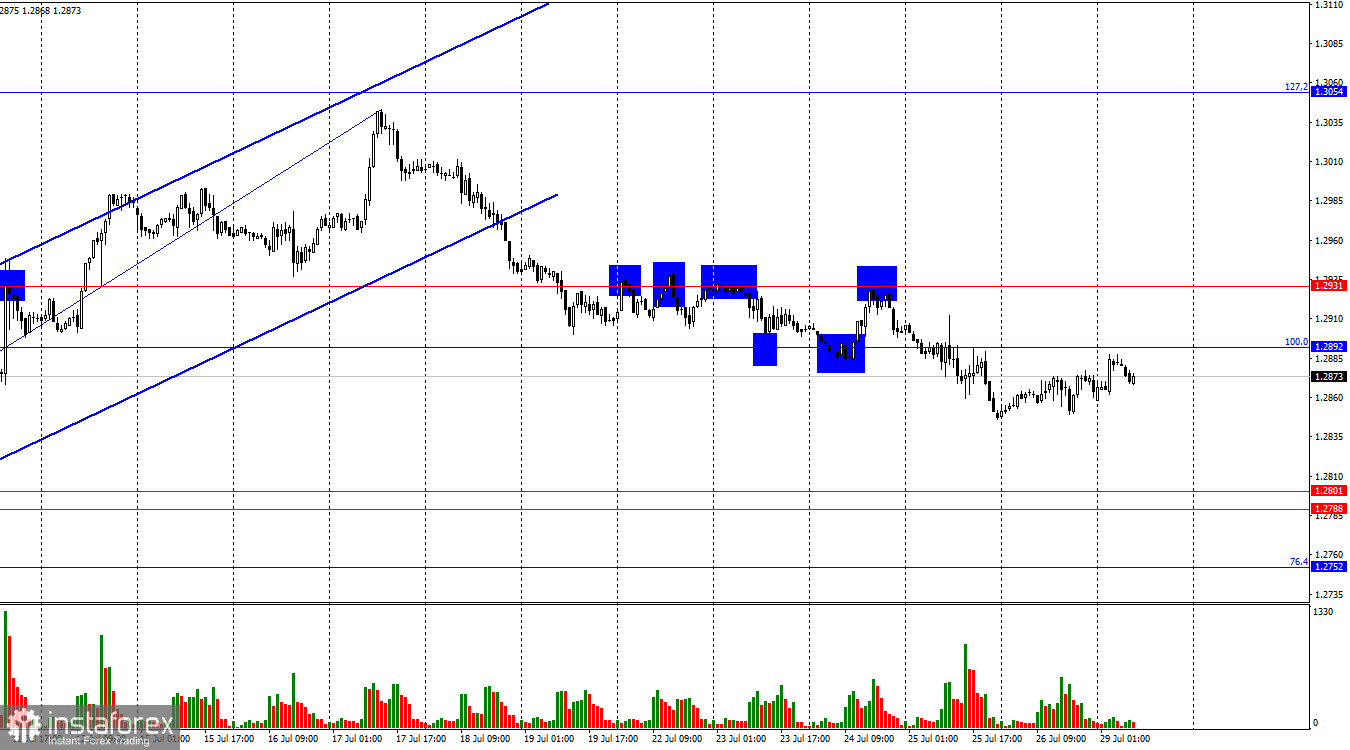The GBP/USD pair started the new week quite actively. It was unusual to see such a strong movement in the first half of the day without any background information. However, there will be enough news this week for traders to anticipate certain developments and respond to them as early as Monday.

Undoubtedly, the most important event of the week is the Bank of England meeting. The meeting itself is always a significant event, but traders are expecting a rate cut this time. Let me remind you that inflation in the U.K. initially rose much more sharply than in the E.U. and the U.S., but it has also decreased just as sharply. Currently, inflation in the U.K. is lower than in the E.U. or the U.S. Thus, a few days before the next meeting of the British regulator, the market has formed an expectation of monetary policy easing.
Traders already showed on Monday how they feel about the possible rate cut in the U.K. Indeed, monetary policy easing is a strong reason for the national currency to fall. The European currency also reacted with a decline to the ECB rate cut. However, it is important to understand that the beginning of easing in the U.K., in the absence of such action in the U.S., does not mean a permanent decline of the pound until the Fed starts cutting rates.
The pound may fall significantly this week, but everything will again depend on U.S. economic data, FOMC members' rhetoric, and market expectations. Even this week, American data may once again slow down the growth of the U.S. dollar, which started the new week.
Thus, two weeks ago, the pound began to fall against the dollar, but at the moment, it is only a corrective wave within the "bullish" trend. The pound may drop to 1.27 or even 1.26, but the market will again question the Fed's monetary policy. If the Fed starts cutting rates in September, as most market participants expect, the bulls could become active again.
Additionally, the market expects five votes "for" a rate cut out of nine possible. If traders are selling the pound on the expectation of a rate cut on Thursday, they may start buying it after the announcement. One thing is certain: the fall of the pound sterling will not be quick or easy.
Conclusion:
The trend for the GBP/USD pair remains "bullish." After breaking below the upward trend channel, only a decline could be expected, and I mentioned that I wasn't considering purchases in the near future. Today and tomorrow, the pound's decline may continue towards the support zone of 1.2788 – 1.2801. A break below this zone will allow traders to expect a further decline in the pound.
In the future, everything will depend on whether the MPC secures five votes to cut rates on Thursday and what the economic statistics from the U.S. will be on Friday. The ISM, JOLTs, and ADP reports are undoubtedly important, but nonfarm payrolls and the unemployment rate are what the market will eagerly await later this week. In the last two days, the situation could change dramatically.
 English
English 
 Русский
Русский Bahasa Indonesia
Bahasa Indonesia Bahasa Malay
Bahasa Malay ไทย
ไทย Español
Español Deutsch
Deutsch Български
Български Français
Français Tiếng Việt
Tiếng Việt 中文
中文 বাংলা
বাংলা हिन्दी
हिन्दी Čeština
Čeština Українська
Українська Română
Română

